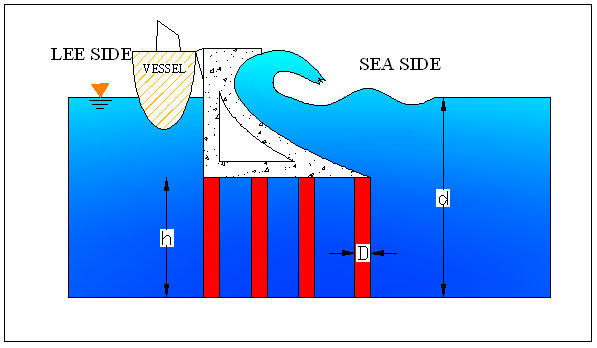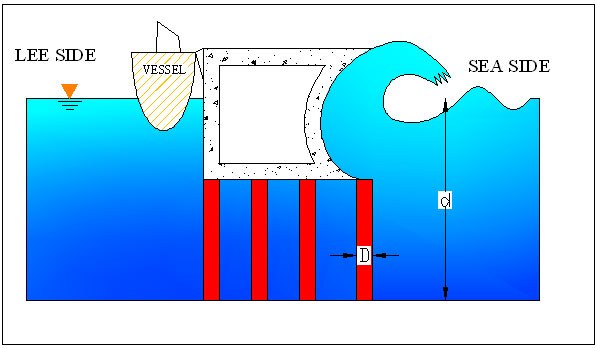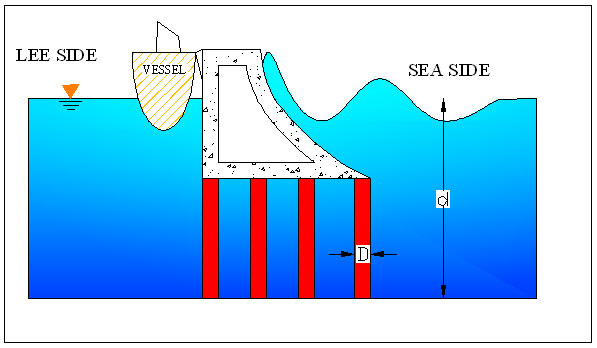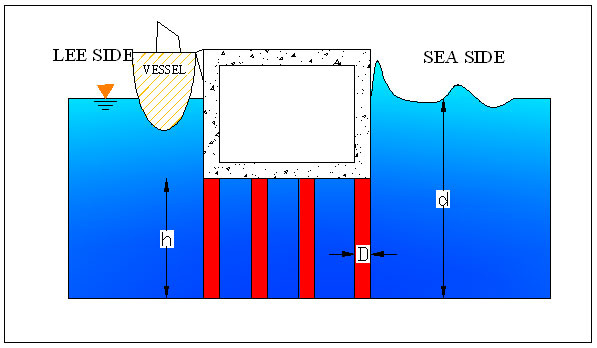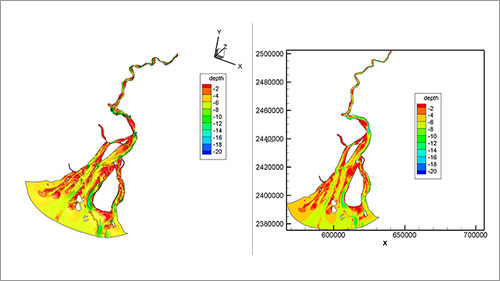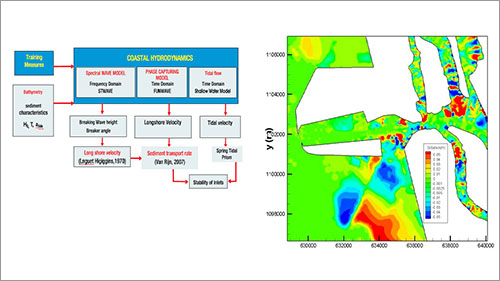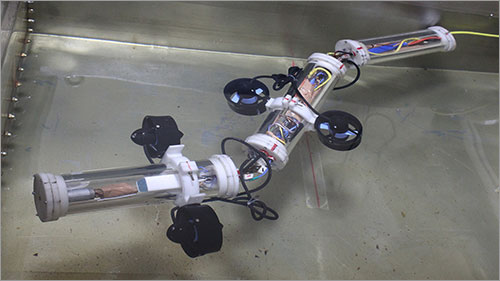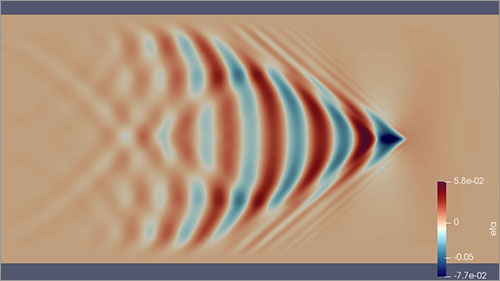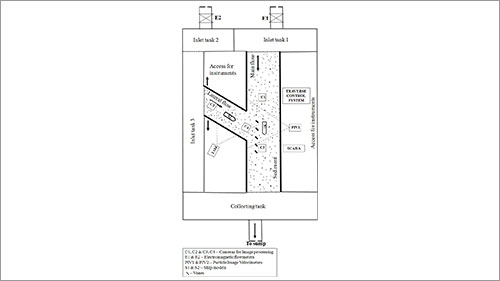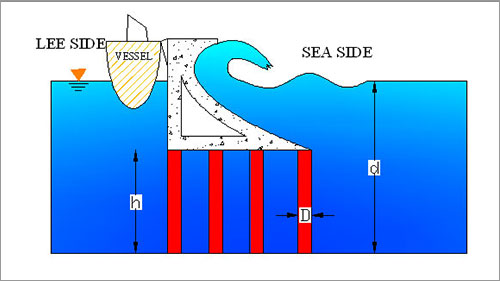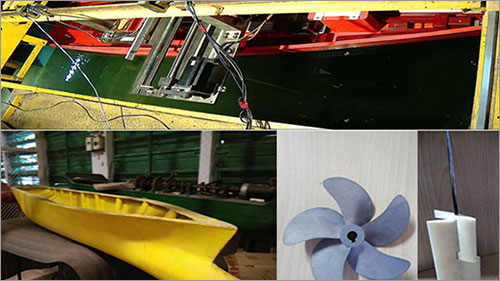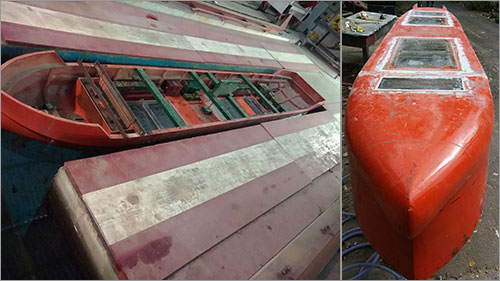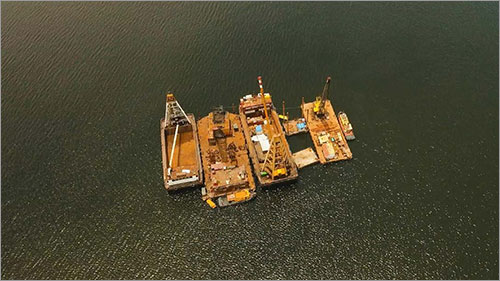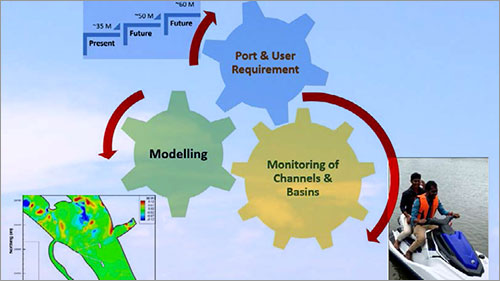NEW CONCEPTS OF PILE SUPPORTED BREAKWATER WITH BERTHING FACILITY
Problem Addressed :
To cope up with a foreseeable increase in the maritime trade due to implantation of Sagarmala,there is a continuous need for development for deep water berthing facility combined with satisfactory tranquil conditions. Due to the limitations in extension of conventional rubble mound breakwaters, the immediate task of the research community is to develop deep water berthing cum breakwater concepts. Piled breakwaters is a possible concept being researched by many. Breakwaters for relatively deeper waters should be stable in order to ensure safety and with a minimum foot print in the Ocean floor, minimum or no wave over-topping but still maintaining the crest elevation as low as possible. This may possibly be achieved by reshaping the shape of the sea front structure in such a way that it offers maximum resistance to the waves or enhances the dissipation of incident wave energy.
Relevance under Sagarmala :
This activity is relevant under Port Modernization and Industrialization.
Why now :
Most of the major ports in India have an ambitious plan to expand and develop facilities to cater to the latest generation of vessels up to 18000 TEUS. This envisages the expansion of our port facilities to outer harbor in deeper waters. Since most of our major harbours are not naturally formed, there is an urgent need for the concept development for the breakwaters in deeper waters with an optimal utilization of space.
Current Status in India :
Most of India’s major and minor harbours have been formed protected by rubble mound breakwaters. In the case of deeper waters, the armour layer of natural rocks is being replaced with concrete units such as tetrapods, Kolos, accropodes, etc. These breakwaters were constructed upto a water depth of 8m to 12m with deepening of the inner harbour region and navigation channel. However, there is a necessity to develop breakwaters for deeper waters for which design and development has to commence in a big way.
Global Status :
Development of major harbours worldwide focuses on the natural or partially natural environment. Hence, very few harbours even outside India would need special type of breakwaters and thus, the study on such requirement in deep waters needs systematic investigations.
Timelines of completion :
Total project duration is 36 months, with the following milestones
| 1st year | Recruitment of project staff: Fabrication of breakwater models: Development of numerical model. |
| 2nd year | Wave flume experiments; Analysis and interpretation of the measurements; Validation of numerical model with flume experimental results |
| 3nd year | Parametric study using numerical model; Preparation of design charts based on the study; Final report submission and preparation of technical papers to referred journals |
Key competencies and stakeholders involved :
Department of Ocean Engineering has the state of the art experimental facilities and pioneer among the hydrodynamic laboratories worldwide. Major ports along India are planning for the development of outer habors into deeper waters for handling increased cargo traffic and hence, the port sector has play a key role as associates in taking forward for implementation.
Short Term Impact :
The concept design of pile supported breakwater with a more effective seaside front face in dissipating the incident wave energy for enhanced tranquillity on its leeside and its’ design charts form the basis for the inclusion in Design Standards.
Medium Term impact :
Implementation of the design concepts in the field and monitoring its effect.
Long term impact :
The environmental benefits in terms of water quality, reduced sedimentation in addition to the avoidance of rocks would lead to reduced threat to the environment.
Physical location of the project :
NTCPWC, IITM Campus.


